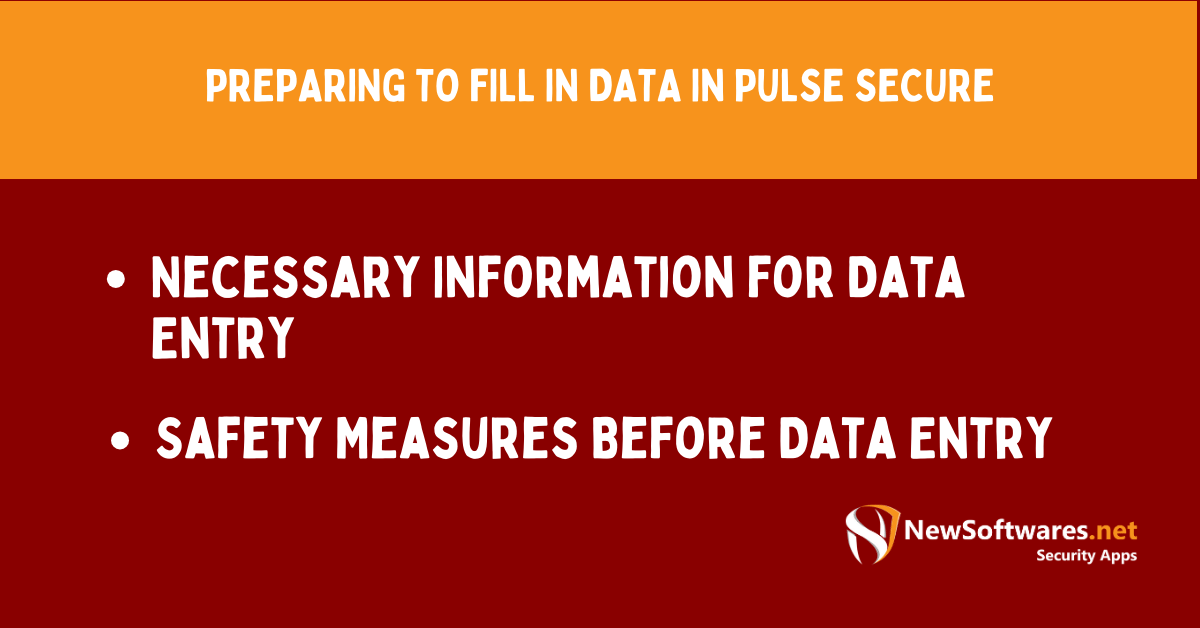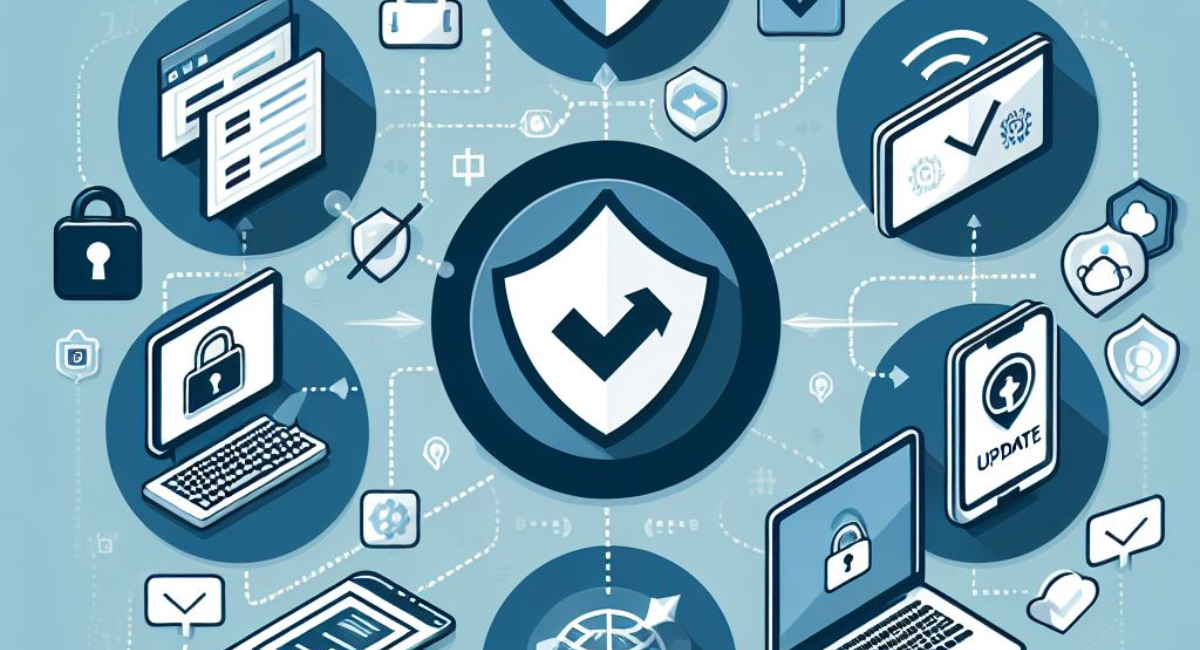To fill in data in Pulse Secure, navigate to the desired section within the application, input your data into the relevant fields, and save changes.
We will explore filling in data in Pulse Secure, a vital tool for data security. Understanding the fundamentals of Pulse Secure is key to ensuring your information remains protected. We will also provide a step-by-step guide to help you navigate the user interface and input your data accurately. Furthermore, I will address common troubleshooting issues and offer tips on maintaining data security in Pulse Secure.
Understanding Pulse Secure

Pulse Secure is a powerful platform that is crucial in safeguarding data. It provides secure remote access for employees and ensures confidentiality, integrity, and availability of corporate resources. You can access sensitive information by enabling secure connectivity while minimizing the risk of unauthorized access.
What is Pulse Secure?
Pulse Secure is a sophisticated virtual private network (VPN) solution that establishes an encrypted connection between a user’s device and a private network.
When using Pulse Secure, your data is protected by advanced encryption algorithms, making it virtually impossible for hackers to intercept and decipher your sensitive information. This secure tunnel ensures that your data remains confidential and secure, even when transmitted over untrusted networks.
In addition to its encryption capabilities, Pulse Secure also suggests an extensive range of features to enhance your remote access experience. These include seamless integration with various authentication approaches, such as username and password, two-factor verification, or even biometric authentication. This safeguards that only authorized individuals can access your organization’s resources.
Pulse Secure’s user-friendly interface allows for easy configuration and management of VPN connections. Whether working from home, at a coffee shop or traveling abroad, Pulse Secure ensures you can securely connect to your organization’s network and access the necessary resources.
Importance of Pulse Secure in Data Security
Pulse Secure specializes in protecting data as it travels between endpoints. It offers multi-factor authentication, secure communication channels, and endpoint protection. Ensuring data confidentiality and integrity minimizes the risk of unauthorized disclosure or tampering.
One of the key features of Pulse Secure is its capability to provide secure remote access to corporate resources. This is particularly important in today’s digital age, where employees often need to work outside the traditional office environment. With Pulse Secure, employees can connect to their organization’s network and access files, applications, and other possessions as if they were physically in the office.
Another important aspect of Pulse Secure is its ability to protect against threats and attacks. It offers advanced endpoint protection, which includes features such as antivirus, firewall, and intrusion recognition and prevention systems. These security measures protect your devices from malware, viruses, and other malicious actions.
Pulse Secure also provides secure communication channels, preventing unauthorized individuals from intercepting or tampering with your data. It uses industry-standard encoding protocols to ensure your data remains confidential and secure, even when transmitted over public networks.
Furthermore, Pulse Secure offers comprehensive auditing and logging abilities, allowing organizations to monitor and track user activity. This helps identify any suspicious behavior or potential security breaches, enabling timely action to mitigate risks.
In conclusion, Pulse Secure is a robust and reliable platform for data security. Its advanced encryption, multi-factor authentication, and endpoint protection features make it a vital tool for organizations looking to protect their sensitive information and provide secure remote access to their employees.
Preparing to Fill in Data in Pulse Secure

Before filling in data in Pulse Secure, there are several important considerations to remember. Taking the necessary steps before entering your data can help safeguard a smooth and secure experience.
Necessary Information for Data Entry
Gather all the required information that you will be entering into Pulse Secure. This may include login credentials, device-specific details, and additional authentication factors. Having this information readily available lets you streamline the data entry process.
When gathering your login credentials, double-check that you have the exact username and password. Verifying this information with your system administrator or IT department is always a good idea to avoid any login issues.
For device-specific details, such as IP addresses or server names, ensure you have accurate and up-to-date information. This will help Pulse Secure establish a secure connection to the correct device or server.
In addition to login credentials and device-specific details, you may also need to provide additional authentication factors. These factors can include one-time passwords, security questions, or biometric data. Ensure you have these factors readily available to complete the authentication process smoothly.
Safety Measures Before Data Entry

Before proceeding with data entry, ensure that your device is updated with the latest security patches and updates. Updating your device’s operating system and security software helps protect against known vulnerabilities and potential threats.
Regularly check for software updates and install them promptly. These updates often include important security areas that address newly discovered vulnerabilities. Keeping your device updated can reduce the risk of illegal access or data breaches.
In addition to updating your device, connecting to a secure network is crucial before entering data into Pulse Secure. Avoid using public or unsafe Wi-Fi networks, which can be prone to eavesdropping and unauthorized access. Instead, connect to a trusted network, such as your home or office network, to ensure the confidentiality and integrity of your data.
If you are unsure about the security of your network, consider using a virtual private network (VPN) to establish a secure connection. A VPN encrypts your internet traffic, making it difficult for anyone to intercept or tamper with your data while in transit.
By taking these safety measures before entering data into Pulse Secure, you can enhance the security of your information and minimize the risk of unauthorized access or data loss.
Step-by-Step Guide to Filling in Data
In this section, we will provide a detailed guide on how to fill in data in Pulse Secure.
Regarding data entry, accuracy and completeness are of utmost importance. In this guide, we will walk you through the process of accessing Pulse Secure, navigating the user interface, and inputting your data precisely.
Accessing Pulse Secure
Launch the Pulse Secure application on your device. This can be done by locating the application icon on your desktop or in your device’s application menu. Once you have found the icon, double-click it to open the application.
After opening Pulse Secure, you will be prompted to enter your login credentials. These credentials typically include your username and password. Ensure that you enter the correct information to gain access to the system. Contact your organization’s IT department for assistance if you are unsure about your login credentials.
Once you have successfully authenticated, you will be offered the Pulse Secure interface. This interface serves as your gateway to accessing and managing your data.
Navigating the User Interface
Take a moment to familiarize yourself with the different sections and features of the Pulse Secure user interface. This will help you navigate through the application more efficiently and effectively.
The interface may include Network Connect, File Browsing, Terminal Services, or Remote Desktop options. Each of these features serves a specific purpose in the data entry process. Understanding how they work and how they relate to your data entry requirements will streamline your workflow.
For example, the File Browsing feature will be your go-to option if you need to access files stored on a remote server. On the other hand, if you need to establish a remote desktop connection to input data into a specific application, the Remote Desktop feature will be your primary focus.
By exploring the various sections and features of the Pulse Secure user interface, you will gain a comprehensive understanding of its capabilities and be better equipped to handle your data entry tasks.
Inputting Your Data
Now that you are comfortable with the Pulse Secure user interface, it’s time to input your data. Before you begin, it is crucial to follow the specific instructions your organization or system administrator provides. (www.biolighttechnologies.com)
These instructions may include guidelines on the data format, any mandatory fields that must be filled, or any additional steps required for successful data entry. Adhering to these instructions will ensure that your data is accurate and complete.
As you input your data, it is essential to double-check your entries before finalizing the process. This step will help minimize errors and ensure the integrity of your data. Take your time and review each field carefully, verifying that the information you have entered is correct.
Remember, data entry is a meticulous task that requires attention to detail. Following the steps outlined in this guide and paying close attention to the instructions provided, you can fill in your data accurately and efficiently using Pulse Secure.
Troubleshooting Common Issues
While using Pulse Secure, you may encounter certain issues that can hinder the data entry process. Here are some common problems and their solutions:
Dealing with Data Entry Errors
If you encounter data entry errors, double-check the accuracy of your inputs. Ensure you have entered the correct information and follow any error-handling protocols your organization provides. If the issue persists, contact your system administrator for further assistance.
Overcoming Connectivity Problems
Check your network connection and ensure a constant internet connection in case of connectivity issues. If the problem persists, try resuming your device or contact your network administrator.
Maintaining Data Security in Pulse Secure
Ensuring the ongoing security of your data is of utmost importance. Here are a few best practices to follow:
Regular Updates and Patches
Stay up to date with the newest Pulse Secure updates and patches. Regularly install the recommended updates to benefit from the latest security enhancements and protect against emerging threats.
Best Practices for Data Security
Implement strong password practices, such as using unique and complex passwords. Enable multi-factor authentication whenever possible, and avoid sharing your login credentials with others. Additionally, exercise caution while accessing Pulse Secure from public networks to prevent unauthorized access to your data.
Key Takeaways
- Pulse Secure provides a user-friendly interface.
- Ensure you have the necessary credentials to input data.
- Always double-check the data you enter for accuracy.
- Use secure and strong passwords when setting up connections.
- Periodically update and backup configuration settings.
FAQs
Q: I’m unable to enter data into Pulse Secure. Why?
A: Ensure you have the right permissions and are logged in correctly.
Q: Can I import data into Pulse Secure from another application?
A: Data imports may be possible depending on the version and settings. Consult the user guide or administrator.
Q: Is the data I enter into Pulse Secure encrypted?
A: Yes, Pulse Secure employs strong encryption for data security.
Q: How do I back up my Pulse Secure configurations?
A: Navigate to the settings or backup section within the application and follow the prompted steps.
Q: Are there any size limits for data entry in Pulse Secure?
A: Specific limits might vary based on your setup and version. Check the documentation or consult your administrator.
Conclusion
In conclusion, By following these guidelines and using Pulse Secure effectively, you can confidently fill in data and ensure the security of your valuable information.
